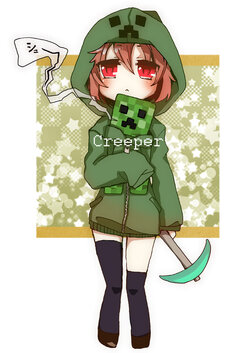Jotaika
Moegirlpedia would welcome your assistance in improving this article☆Kira~
As you read this article, you're welcome to participate in editing this page. Before editing, please read the wiki quickstart, editing guidelines and retrieve relevant information. We wish you a good time on Moegirlpedia. |
 | |
| Base Info | |
| Term | Jotaika (女体化) |
|---|---|
| Synonyms | Feminization, maidenization, nianghua (娘化) |
| Origin | Chinese ACG community |
Jotaika (Japanese: 女体化, じょたいか refers to an artistic creation technique that gives women the appearance, character, and costume of anything. The jotaika we are talking about now generally refers to the jotaika carried out by the moefication technique, also known as nianghua. Moefication emerged with the development of modern ACGN subculture and Moe culture.
Contents
Jotaika vs. other concepts
Jotaika and anthropomorphism
Jotaika and gijinka are two related but distinct concepts.
The two belong to the cross relationship. In addition to the large overlap in their respective ranges, there are also parts that do not belong to each other.
Anthropomorphism is to give non-human (non-human) things to the appearance and personality of human beings. The anthropomorphic characters can be the appearance of men, women and children.
Jotaika is to assign non-female things and characters as female images, and its scope includes the anthropomorphization of women in personification and the conversion of original male characters into female characters.
Jotaika and genderbending
Nianghua and sexual conversion have certain similarities, but there are essential differences.
Nianghua is a process of artistic creation, a process of giving non-female things and characters as female images.
After Nianghua is 'another character, it is to create a new character.
Sexual conversion is a physical feature (overhead), or the process of achieving this physiological change. Before and after the sexual transition, although the gender has changed, it is still the 'same character' instead of a new one.
The following example can illustrate the difference between the two (among them, sex conversion, just talking about male to female):
- Motherhood
An existing male character, such as Kyon ("The Melancholy of Haruhi Suzumiya"), is endowed with female characteristics through artistic creation, and another character "虚子" is born.
This process belongs to "jotaika". Kyon and Kyonko are two characters'.

- Genderbending
Ranma Saotome (Ranma 1/2") Because of a curse, after being exposed to cold water, he will become a girl (named "Ranko Saotome" ), after being drenched in hot water, he will become a man again. Ranma turns into a girl due to cold water. This process is a "genderbending". Ranma and Ranko before and after the genderbending are the same person, not two people.
Jotaika and moeness
If the character made by motherhood is a very cute and cute two-dimensional girl, motherhood belongs to the category of "moe motherhood", which belongs to the category of cuteness. And sprouting is a larger concept, giving anything to the sprouting element belongs to sprouting. (That is, there are also other types such as turning female characters into female characters, and turning male/female/non-gender characters into male characters.)
| |||||||||||||||||||||||||||||||||||||||||||||||||||||||||||||||||||||||||||||||||||||||||